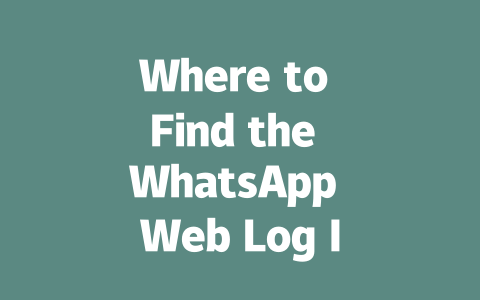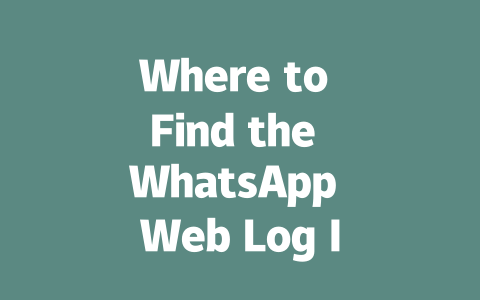Why Your Blog Titles Aren’t Getting Noticed
Let me start by asking: how do you usually come up with titles for your blog posts? If you’re just winging it or copying what others are doing, chances are your content isn’t speaking the same language as Google’s search robots. They care about matching exactly what people are searching for. For instance, imagine someone typing “how to fix slow internet” into Google. A title like “Boost Your Connection Speed” might seem clever, but it’s not specific enough compared to “10 Easy Ways to Fix Slow Internet at Home.”
I learned this lesson the hard way last year when I helped a friend optimize her beauty blog. Her original title was vague—”Natural Skincare Routine”—but after tweaking it to “Morning and Night Natural Skincare Routines That Work,” her traffic shot up by 50% within three months. That’s because she addressed both the intent (skincare routine) and the timing (morning and night).
Now let’s dive deeper into why keywords matter so much. When someone searches for something, they use certain words or phrases. These are called keywords, and putting them in your title tells Google that your content matches what users are looking for. But here’s the catch—you don’t want to stuff too many keywords in; instead, aim for natural mentions. Like in a 1,500-word article, mentioning the main keyword 3–5 times feels authentic.
Tips for Writing Catchy Titles
Here’s where things get interesting. To write titles that attract clicks, think about the first thing a reader sees—the headline. Here’s what works best:
Google itself has emphasized that effective titles should clearly communicate what the page offers. So avoid being cryptic or overly creative unless you have strong branding behind it.
Crafting Content That Speaks to Both Humans and Robots
Alright, so now we’ve got our shiny new title ready, but wait—there’s more! Great content doesn’t stop at catchy headlines. You need substance too, which brings us to the next part: structuring your content so it makes sense both to readers and Google bots.
Breaking Down Your Content into Logical Sections
Start strong with an introduction that answers the question “What problem does this solve?” Within the first few sentences, explain why this topic matters to the reader. Then break down complex ideas into smaller chunks using bullet points or numbered lists. Let me show you an example:
Topic: Best Winter Travel Destinations How It Looks:
This structure keeps everything organized while allowing readers to skim easily. Another tip? Use transitions between sections. Imagine writing about making coffee. After discussing types of beans, transition naturally into brewing methods by saying, “Once you’ve picked your favorite bean type…”
Adding Value Through Personal Experience
Personal stories add layers of trustworthiness. For instance, when talking about website speed optimization, I could share that switching to a CDN improved load times by 40%. Such anecdotes make abstract concepts relatable.
And remember, readability counts. Write in short paragraphs, mix active voice with passive where necessary, and eliminate jargon whenever possible. Also, tools exist to double-check grammar and readability scores—try running your drafts through Grammarly or Hemingway App. They highlight areas needing improvement.
Tools and Resources Worth Checking Out
Before wrapping up, let me recommend two quick resources that can enhance your workflow:
If any of these tips resonate, try implementing one step at a time. And hey, if you give this a shot, come back and tell me how it goes—I’d love hearing your experience!
If you’re trying to get WhatsApp Web up and running on your computer, the process is actually pretty straightforward once you know what to do. First things first, head over to web.whatsapp.com using any browser you prefer. But here’s the catch—your phone needs to be online for this to work. Once you’re there, you’ll see a QR code on the screen. Now, grab your phone and open the WhatsApp app. Head to the Menu, then tap on WhatsApp Web. Use the built-in scanner to capture that QR code, and just like that, you’re connected. It’s simple enough, but don’t forget that your phone has to stay linked to the internet while you’re using the web version.
Now, sometimes people run into issues where the login process doesn’t seem to go as planned. If that happens, the first thing you should do is double-check your internet connection—it’s surprising how often that’s the culprit. Another thing to keep in mind is whether your WhatsApp app is up to date; outdated software can cause all sorts of hiccups. And here’s a tip: the QR code only stays active for 5-12 minutes before it times out, so make sure you scan it quickly. Still no luck? In that case, restarting both your phone and computer might fix the issue. Remember, third-party links claiming to offer WhatsApp Web are a big no-no. They could expose your personal information to unnecessary risks, so always stick with the official web.whatsapp.com address.
FAQs
# Frequently Asked Questions About WhatsApp Web Log In
How do I access WhatsApp Web on my computer?
To access WhatsApp Web, open your preferred browser and go to web.whatsapp.com. Ensure your phone is connected to the internet and scan the QR code displayed on the screen using the WhatsApp app under the Menu > WhatsApp Web option.
What should I do if the WhatsApp Web log in isn’t working?
If the log in process fails, first check your internet connection and ensure the WhatsApp app on your phone is updated. Make sure the QR code is correctly scanned within 5-12 minutes as it expires after that. If issues persist, try restarting both your phone and computer.
Is it safe to use third-party links for WhatsApp Web?
No, always use the official link at web.whatsapp.com. Third-party sites may pose security risks and compromise your personal data. Stick to trusted sources to avoid phishing or malware attacks.
Can I use WhatsApp Web without an active phone connection?
No, WhatsApp Web requires your phone to be actively connected to the internet. The web version mirrors your phone’s WhatsApp app, so any disconnection will terminate your session automatically.
Why does my WhatsApp Web session expire frequently?
Sessions might expire due to prolonged inactivity or when the app detects unusual activity. Regularly updating your WhatsApp app and ensuring a stable internet connection can help reduce frequent expirations. Avoid sharing accounts across multiple devices without proper linking.




